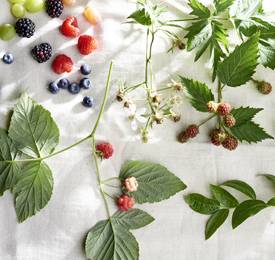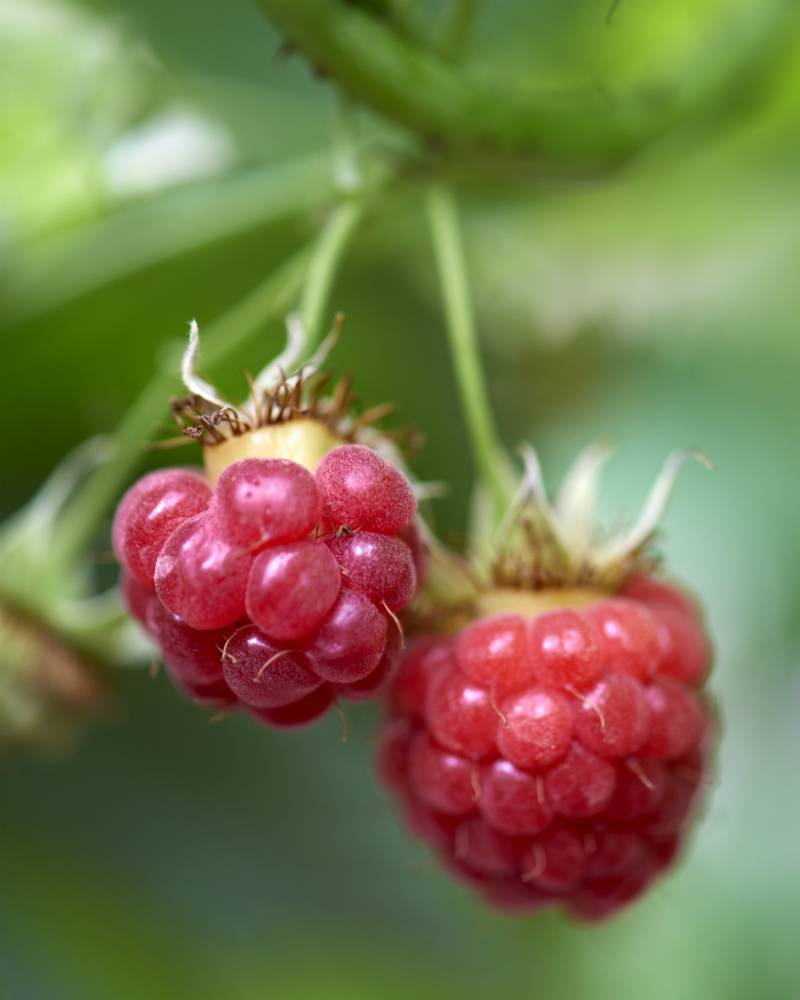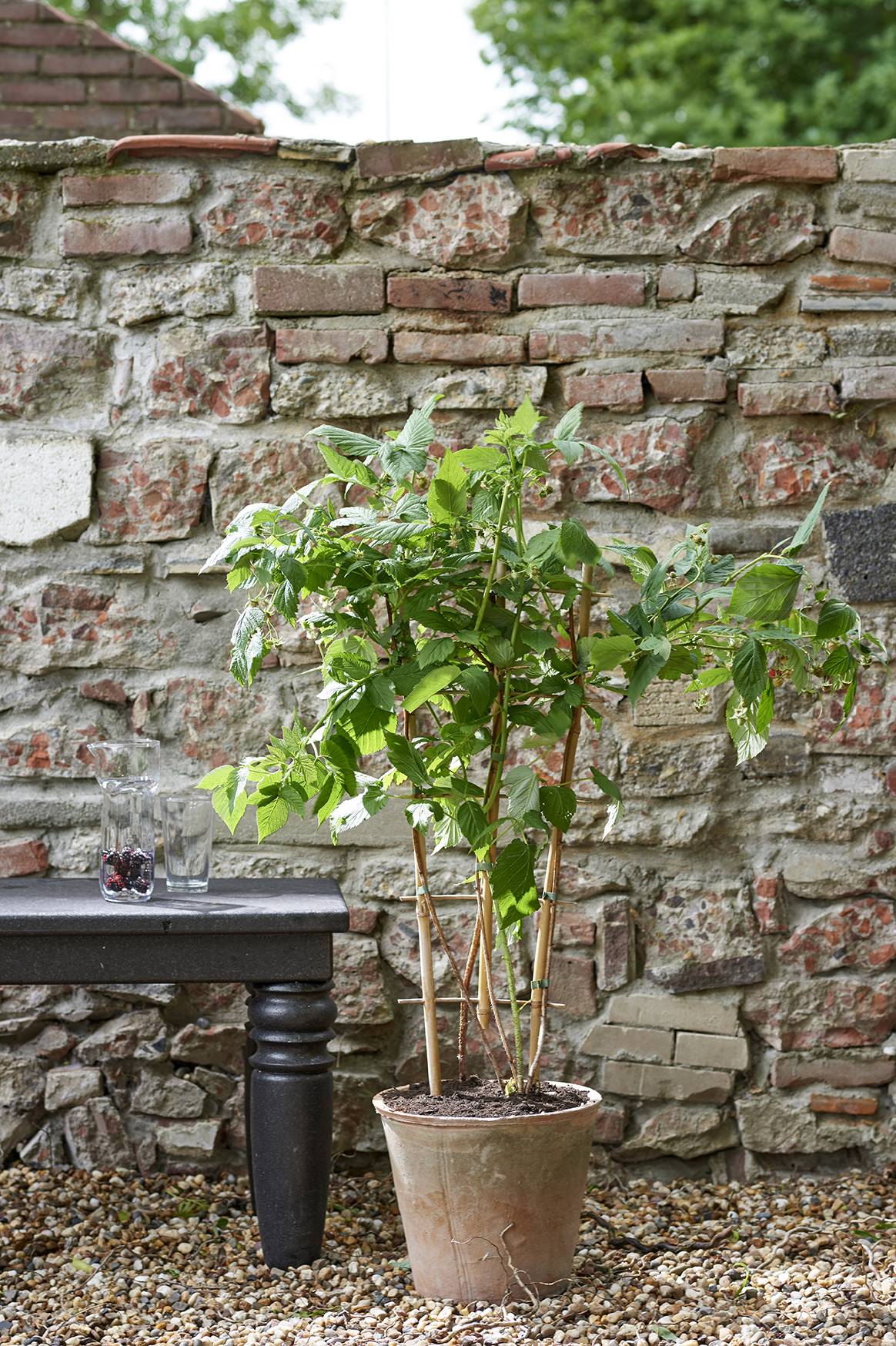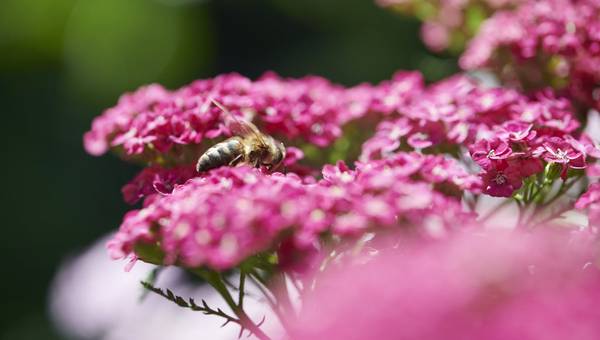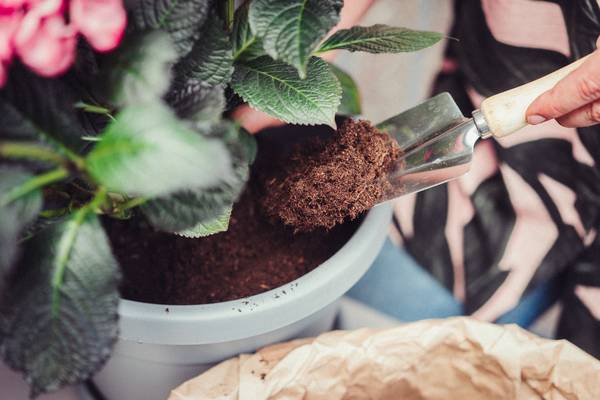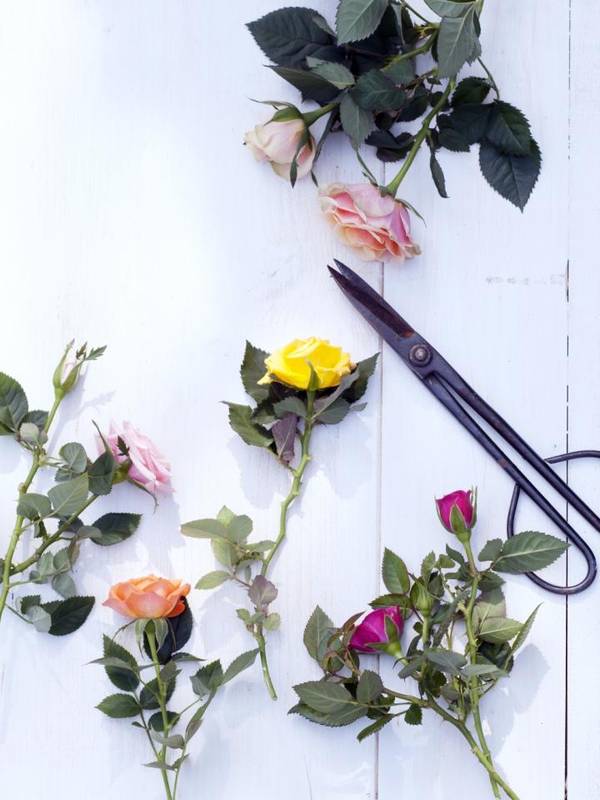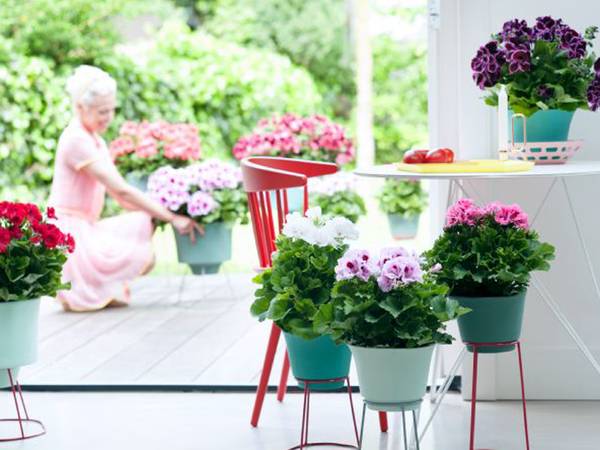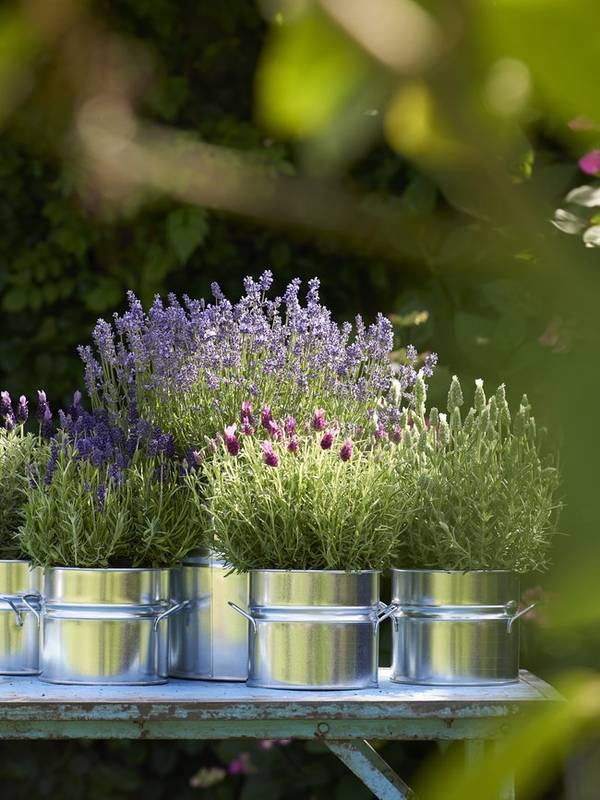
The raspberry, officially called Rubus idaeus, is a member of the Rosaceae family. There are some 3,500 species. The raspberry is a hardy deciduous climbing shrub that is available with pink or yellow fruit. The shrub can give fruit twice a year: in the summer on established growth (summer raspberries) and in late summer/autumn on the fresh young runners (autumn raspberries). They’re self-pollinating, so the wind, honeybees and bumblebees ensure that the plant produces plenty of fruit after flowering. Raspberries also do well on the balcony and patio, particularly the plants that remain compact. Leave the fruit to ripen well so that they become nice and sweet. They will be pretty soft by then, so pick them gently.
Origin
The raspberry is native to a large proportion of the world. The well-known pink raspberry was first spotted in Italy and Greece in the 16th century, but originates from East Asia.
Trivia
- The raspberry symbolises sweet love.
- Raspberries can also be combined well with other climbing fruit species such as blackberries. You can create your own fruit pillar or fruit wall from which you can enjoy delicious snacks all summer long.
- You can freeze raspberries or use them straightaway to make tasty juices, cakes, desserts, jams or salads.
- Birds also love raspberries - protect the bush with a net.

Care tips
- Raspberries like a sheltered sunny spot - the fruit will ripen well there and become nice and sweet.
- Raspberries’ roots are very close to the surface. You should therefore water the plants regularly and make sure they don’t dry out, particularly when they’re planted in pots or containers.
- Raspberries like humus-rich, slightly acid, well-draining soil.
- Support the somewhat weak branches with canes or a frame.
- Cut the plant back in early spring so that it remains compact and healthy. You can cut it back vigourously to just above the ground (autumn raspberry) or cut away the raspberry-bearing branches after harvesting and leave the other new shoots, which will bear the fruit in the following year (summer raspberry).
- Give the raspberry some extra food for acid-loving plants in the spring so that it grows and blooms well.
